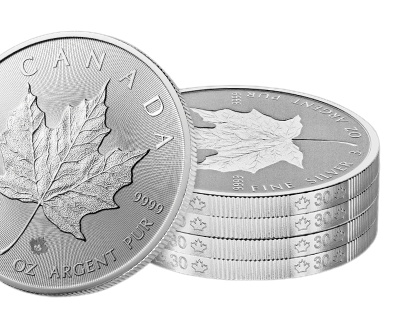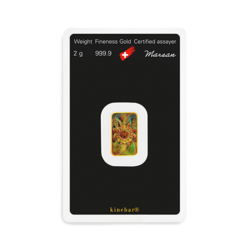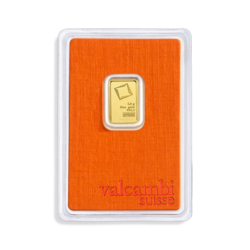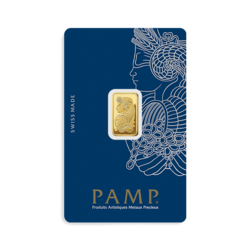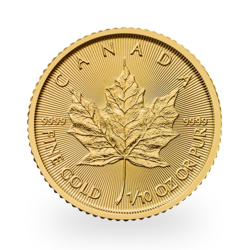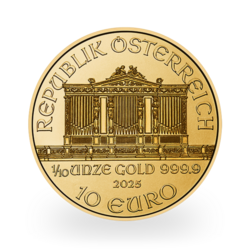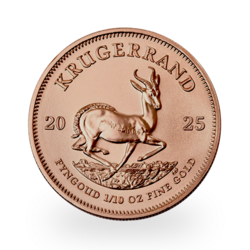The value of any currency is based on trust. Trust in the institution that issues the currency, in the bank that holds it, in the person with whom it is exchanged, but also in the stability and power of the country. However, as the quantity of currency increases and exceeds the quantity of goods and services produced, its value decreases and trust is lost in all its forms. When this happens, the power of the issuing country inevitably follows the same trend. This change then leads to capital movements towards other assets and other countries, including gold, as history shows us. This is what we are seeing today in Eastern countries. Gold purchases by the central banks of new powers, including China and Russia, reflect a shift in global power from the West to the East that is only just beginning.
Let's get back to basics. If we accept a currency that has no intrinsic value, unlike gold or silver, it is because we all believe that this currency will be accepted collectively. This is known as fiat currency, from the Latin fiat (meaning “let it be done”). Just as a $10 bill has only the value we give it, a transfer of $10 from one digital bank account to another (being a circulating debt) also has only the value we give it. The value of a currency therefore only takes shape when we all agree to recognize it for what it is. It is on this principle that trust in any monetary system is based... Because, ultimately, its intrinsic value is fictitious. In the existing debt system, which is centuries old, money is only created through debt, so all we are doing is exchanging promises of repayment.
However, this confidence is bound to fluctuate. If these $10 lose their value over time, everyone will wonder why they should trust the institution and the issuing country when they are supposed to guarantee the value of this currency. We were promised that these $10 would remain stable, but this is no longer the case today. The commitment is therefore no longer being honored. It is on this principle that the collapse of any monetary system begins...
There are countless examples of countries that have experienced such monetary crises. Most major powers have even ended up collapsing in this way. Whether it be Ancient Greece, the Roman Empire, the Byzantine Empire, the Netherlands in the 17th century, France in the 18th century, Germany in the early 20th century, and now the United States, as we are currently witnessing a loss of confidence in the international financial system.
It all began in 1945 when the dollar became the world's reserve currency, then in 1971, when we moved from the gold standard to the dollar standard. The United States- thanks to its unrivaled power- managed to impose its own monetary system based on the dollar. From then on, global investors no longer sought refuge in gold but in the dollar by buying Treasury bonds. Much of the strength of this system, as we know, lies in having forced the main producing countries to trade raw materials in dollars, because any country wishing to acquire these vital resources had to first obtain dollars.
Furthermore, to ensure the continuity of this hegemony, the United States did not simply eliminate all forms of competition. It also created the conditions necessary to keep the gold price artificially low so that no country or alliance would be interested in building a parallel system. In recent decades, gold purchases by foreign powers have been closely monitored by the United States, which has also begun to sell and lease part of its gold reserves, already being the main holder.
But this system has reached its limits over time. As the United States has become heavily indebted, the dollar has lost value and confidence has been reduced. This phenomenon was obvious to anyone who thought about the subject more than half a century ago: as the United States was forced to issue massive amounts of Treasury bonds to flood the world with dollars and maintain its hegemony, the US currency was bound to depreciate eventually. This was despite the fact that successive US administrations have continued to resort to increasingly aggressive policies to this day. However, this has not been enough. On the contrary, these policies have ultimately accelerated the loss of confidence in the US monetary system. New powers and emerging countries have been encouraged to de-dollarize and buy gold, causing the value of the dollar to fall steadily. Furthermore, the United States, which constantly needs to find new buyers to finance its foreign debt, is facing increasing difficulties given the circumstances and the total amount of its debt. Twenty-five years ago, global dollar reserves accounted for nearly 75% of total reserves; today, they account for just over 50%. Conversely, central banks have steadily increased their gold reserves in recent years, to the point where they now hold more gold than dollars in their reserves. The yellow metal is therefore considered a safer bet than the US currency...
This loss of confidence comes at a price. Over the last fifty years, the value of the dollar has depreciated by more than 100% against gold, which has become the dominant benchmark. Not only has confidence in the dollar weakened, but it has shifted towards gold, reversing the trend that began in 1971.
More broadly, the loss of value of fiat currencies has created widespread anxiety, which is reflected in the rise of gold. Purchases by central banks, as well as those by individual investors are simply reflecting this trend. The appeal of such an ancient asset can be explained by the prevailing uncertainty, but also because the dominant monetary system has reached a stage that requires a return to reality. Gold is not like other assets: due to its timeless nature, limited quantity, and historical use as a medium of exchange, it remains the benchmark asset.
In this context, the big question is what currency will underpin the new international financial system. Now that confidence in the existing system is almost gone- it is gradually shifting to the new heart of the global economy, namely Eastern countries- all solutions are possible. Especially since, unlike in past centuries, we have entered a multipolar world that does not seem to leave room for a single superpower. It therefore remains to be seen whether the demand for gold is merely a reflection of this loss of confidence or whether it will go so far as to make the yellow metal the next benchmark currency.
Reproduction, in whole or in part, is authorized as long as it includes all the text hyperlinks and a link back to the original source.
The information contained in this article is for information purposes only and does not constitute investment advice or a recommendation to buy or sell.

